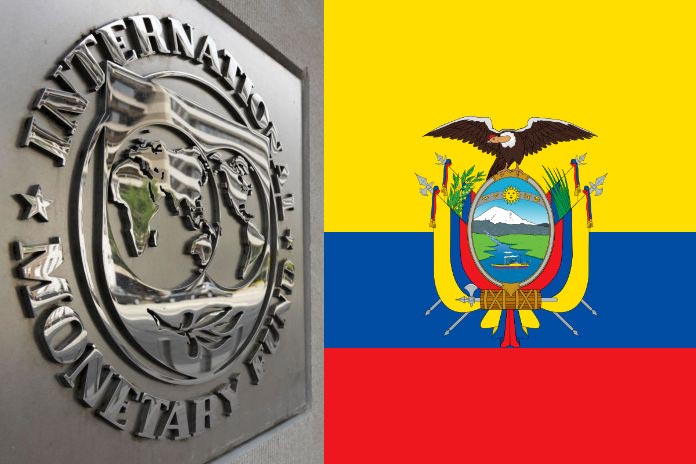The International Monetary Fund (IMF) has recently conducted an extensive evaluation of Ecuador’s financial sector, aiming to identify potential vulnerabilities in the country’s banks and cooperatives in the event of an economic shock. This analysis is part of a broader assessment program the IMF has been conducting in Ecuador’s financial sector, and it sheds light on various aspects of the country’s financial landscape.
Private banks and cooperatives play a crucial role in Ecuador’s financial system, accounting for a significant 81% of the sector’s total assets. The report also touches upon the situation of public banks, but its primary focus is on private financial institutions.
One notable finding from the report is that private financial entities have shown resilience in the face of economic shocks, particularly in the aftermath of the Covid-19 pandemic.
Loan delinquency a problem
At the same time, the IMF does highlight potential solvency and liquidity risks that some financial institutions might encounter if faced with an economic shock. These concerns arise from the fact that these entities had to absorb losses stemming from unpaid loans, which saw an increase during the pandemic.
The IMF identifies financial relief measures such as loan forgiveness, restructuring, and refinancing as contributors to a weakening of the payment culture in Ecuador. Among seven countries, Ecuador ranks second in the region for having the highest percentage of overdue loans, surpassed only by Peru.
Furthermore, the report outlines additional challenges that the Ecuadorian financial system may face between 2023 and 2025. These include a potential drop in oil prices, a slowdown in global demand from major players like the United States and China, and the possibility of political and social unrest, all of which could have adverse effects on the country’s economic stability.
One-fifth to one-third of cooperatives and smaller banks could fail
The most significant challenges, however, seem to be faced by cooperatives and smaller banks. The IMF conducted stress tests to assess whether these institutions would maintain adequate solvency in the event of various economic shocks. Solvency, in this context, refers to an entity’s ability to meet its financial obligations without depleting its assets.
In mild to moderate risk scenarios, the IMF’s stress tests indicate that five small private banks out of the 24 in existence and 19 out of 96 medium-sized cooperatives would fail to meet the minimum solvency requirement mandated by law, which stands at 9%.
In more adverse scenarios, these numbers increase, with nine banks and 35 cooperatives falling below the required solvency percentage.
However, the Association of Private Banks (Asobanca) seeks to reassure citizens, emphasizing that overall system indicators remain healthy. They argue that these exercises help fine-tune financial sector regulation to bolster the solidity and stability of the financial system.
One of the key challenges highlighted by the IMF report relates to microcredit, where institutions with less diversified credit portfolios, primarily focused on consumer loans and small to medium-sized business lending, face significant vulnerabilities. The main issue for these entities is losses incurred due to delinquent loans in these segments, particularly in microcredit.
The non-performing loan rate for microcredit reached 7% in private banks and 8.59% in cooperatives as of August 2023. To mitigate these losses, institutions must set aside provisions, impacting their solvency levels.
One-half of large banks have liquidity issues
Liquidity is another crucial aspect of financial stability. Liquidity measures how much cash or easily convertible assets an entity holds in the short term. The IMF also assessed liquidity among the largest banks, representing 60% of the system’s assets, using the minimum coverage indicator (LCR).
In an adverse scenario, the IMF found that three out of six banks would fall below the IMF’s reference LCR. This doesn’t imply insolvency but underscores the need for Ecuador to address these risks, especially when external financing conditions are tightening. This has led to intense competition among financial institutions to attract deposits, resulting in the highest interest rates for savers in 16 years in 2023.
The report suggests several recommendations to address these challenges. One problem highlighted is the limited options for financial institutions to strengthen their liquidity. The Central Bank of Ecuador cannot provide loans to these entities, and the liquidity fund managed by Deposit Insurance (Cosede) is underutilized due to collateral and operational requirements.
Other liquidity-related challenges include requirements for financial institutions to maintain at least 60% of their liquid assets in Ecuador and the obligation for private financial entities to invest in public securities and public banks. The IMF questions the necessity of such investments in non-market-priced papers, which may facilitate government financing but pose systemic risk.
One of the IMF’s recommendations is to eliminate barriers that prevent banks from investing in liquid assets abroad and ensure that liquid assets held within the country can be reliably monetized during times of stress.


Thank you for the generic overall picture of Ecuador’s bank and cooperativa’s health per the IMF. Can someone point me to current information on health of specific banks and cooperatives? I didn’t see names listed in the download. Did I miss something? Gracias.
Was looking unsuccessfully for information on health of specific banks and cooperatives in the IMF report download. Did I miss something? Can someone recommend where to find this?
This is a good question. The IMF did not break out individual banks in their report (as you’ve noticed), however you can email them at publications@imf.org and ask them if they can provide you that kind of information.
Also, the IMF used the Superintendencia de Economia Popular y Solidaria, and Superintendencia de Bancos as resources for their data analysis.
You can try to get further information from them. The Superintendencia de Economia Popular y Solidaria can be emailed at contactenos@seps.gob.ec ; the Superintendencia de Bancos Cuenca office is at Antonio Borrero 710 and Presidente Córdova in El Centro.
If we find more detailed information we will post it here.